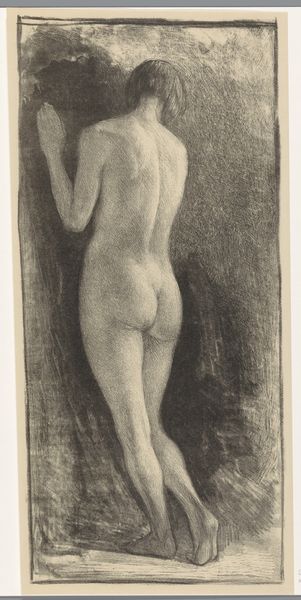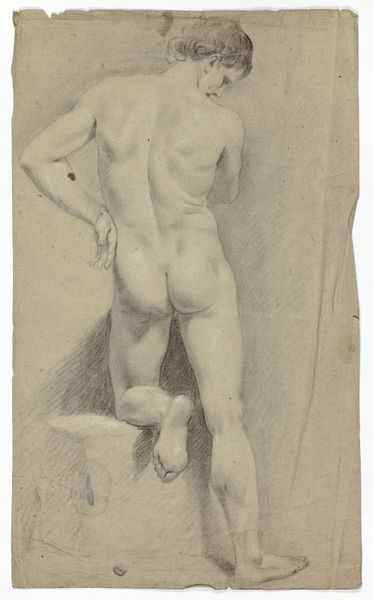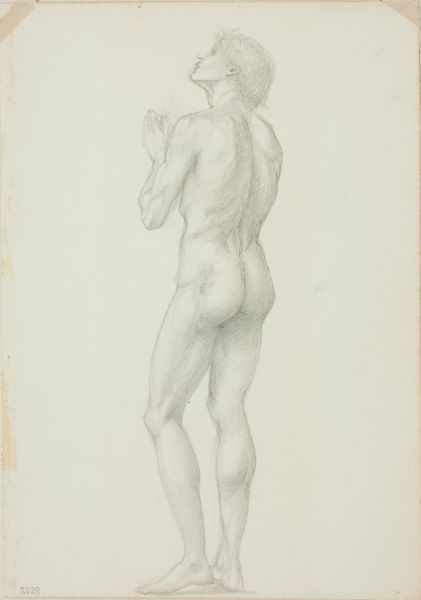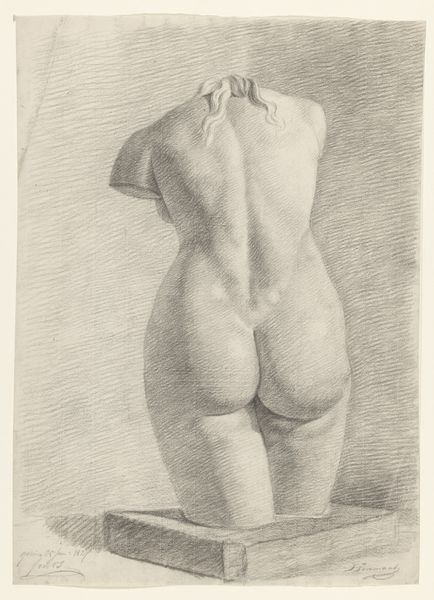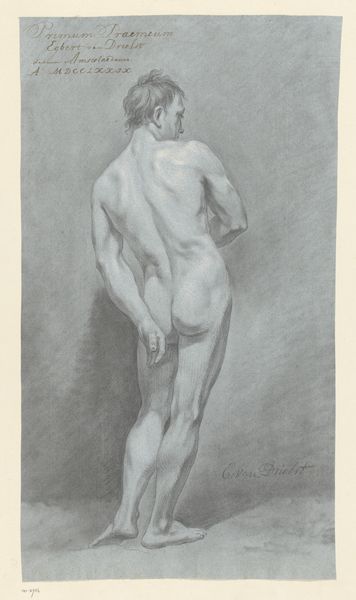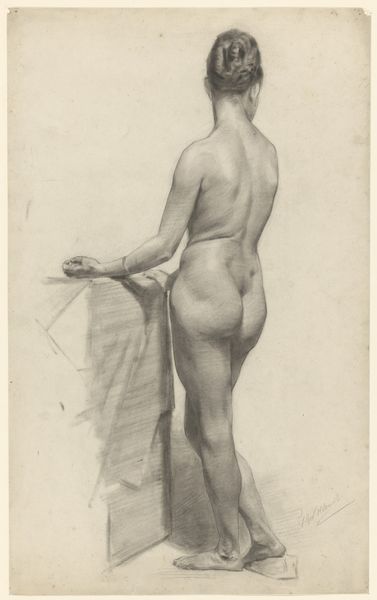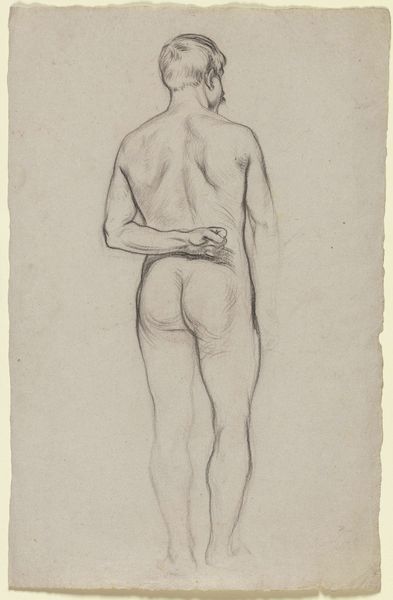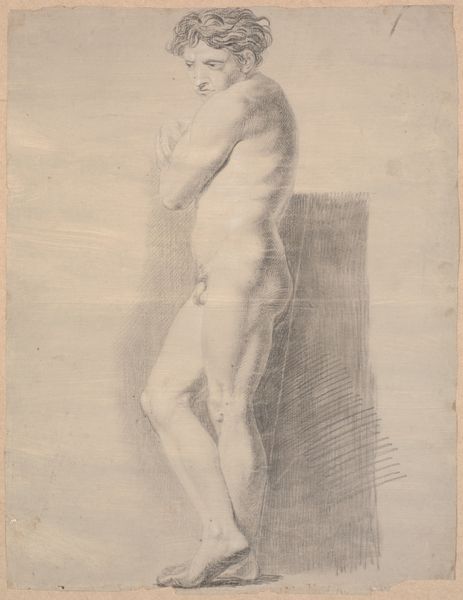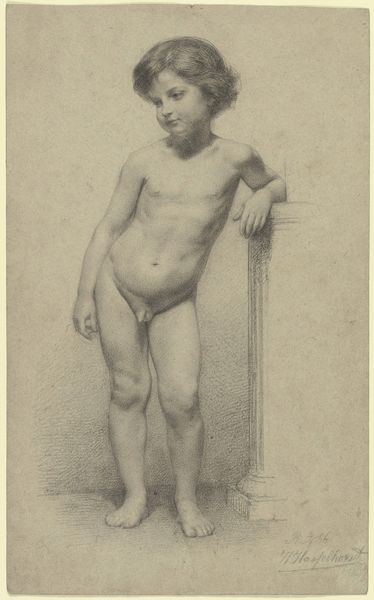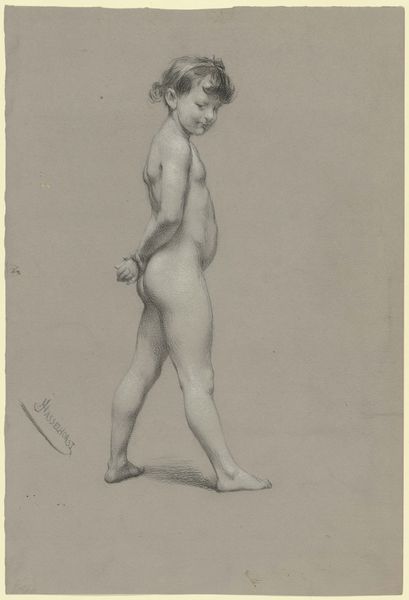
drawing, pencil, charcoal
#
pencil drawn
#
drawing
#
charcoal drawing
#
figuration
#
pencil drawing
#
pencil
#
portrait drawing
#
charcoal
#
academic-art
#
nude
#
realism
Dimensions: height 580 mm, width 330 mm
Copyright: Rijks Museum: Open Domain
Editor: We're looking at "Mannelijk naakt op de rug gezien," or "Male Nude Seen From the Back," a drawing by Nicolaas van der Waay, created sometime between 1865 and 1936, using pencil and charcoal. There’s a striking realism to the musculature, but something about the angle feels vulnerable. What do you see in this piece? Curator: It’s compelling, isn’t it? Beyond the technical skill, evident in the academic style, consider the context of its creation. Late 19th, early 20th century: artistic explorations of the male nude often intertwined with evolving societal views on masculinity, sexuality, and power. Who was the intended audience, and what messages were implicitly, or perhaps even subversively, being conveyed? Does the artist's rendering align with or challenge established notions? Editor: I hadn’t thought about it in terms of subversion. I was focused on the… straightforwardness, I guess. How would you relate those gender dynamics to a study like this? Curator: The male nude, historically, has often been portrayed to exemplify idealized strength and virility. Van der Waay presents the figure with remarkable realism, which allows us to scrutinize both the idealized elements and deviations from that ideal. Do you see it challenging typical representations? Also, let's think about who traditionally controlled the gaze in art. Editor: That's true. I'm now noticing that he's partially turned away and almost seems to be caught unawares, resisting that objectification. It prompts me to consider his interiority. Curator: Precisely. By analyzing art within its historical and social contexts, we gain a richer understanding of how artists navigate cultural norms and potentially offer critiques. The very act of depicting a male nude outside the constraints of heroic narrative, it begs us to reconsider pre-conceived narratives around the male form. Editor: This really makes me rethink the assumptions I initially had about "nude" art and academic training, seeing beyond technique alone. Curator: Excellent. That’s what it's all about. Let's keep questioning and exploring these deeper narratives within art history!
Comments
No comments
Be the first to comment and join the conversation on the ultimate creative platform.
